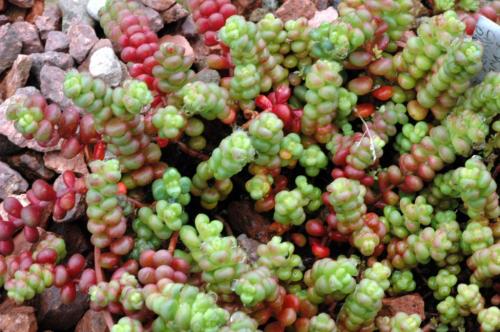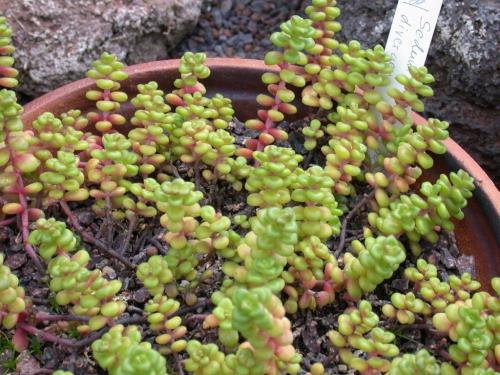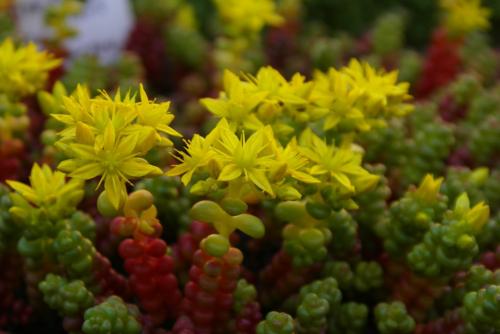DIVERGENS S. Watson, 1882
Synonyms :
Amerosedum divergens (S. Watson) A. Löve & D. Löve (1985)
Sedum umbellatum auct. (s.a.)
Distribution : South-western Canada (British Columbia), western USA (Washington, Oregon, northern California), to 2300 m.
Description (according to IHSP, 2003) :
Glabrous perennial herbs with slender rootstock and branched decumbent stems, rooting freely at the nodes.
Leaves closely set, decussate (rarely alternate), suborbicular or spatulate-obovate, rounded, thick and turgid but subterete, almost globular, sessile, slightly subcordate with clasping base, 4,1 - 8,9 x 4,1 - 6,1 mm, green or reddish-green.
Inflorescences : Flowering branches erect, simple, rarely branched, ± 9,5 cm, inflorescences terminal cymes with 2 - 3 branches; bracts elliptic, obtuse, pedicels 0 - 2,8 mm, enlarged apically.
FIowers 5-merous (rarely 6- or 7-merous), sepals broadly sessile, basally connate, ovate, obtuse, 2 - 3 x 1,5 - 2 mm, green, petals free, sometimes basally slightly connate, elliptic-lanceolate, acute or obtuse, with a mucronate appendage, yellow, ± 6 mm, erect basally, then spreading, filaments yellow, anthers yellow.
Cytology: 2n = 16.
Ray Stephenson writes (Sedum, Cultivated Stonecrops, 1994, p. 197) : "Closely packed, glassy leaves are similar in texture and shade to those of S. oreganum, but leaf shape and arrangement immediately separate the two species.... Only one other North American species has opposite-decussate, succulent leaves, namely, Sedum debile, which has very light green leaves. Leaves of S. divergens are shiny, glassy-green, and turn bright red in full sun."


